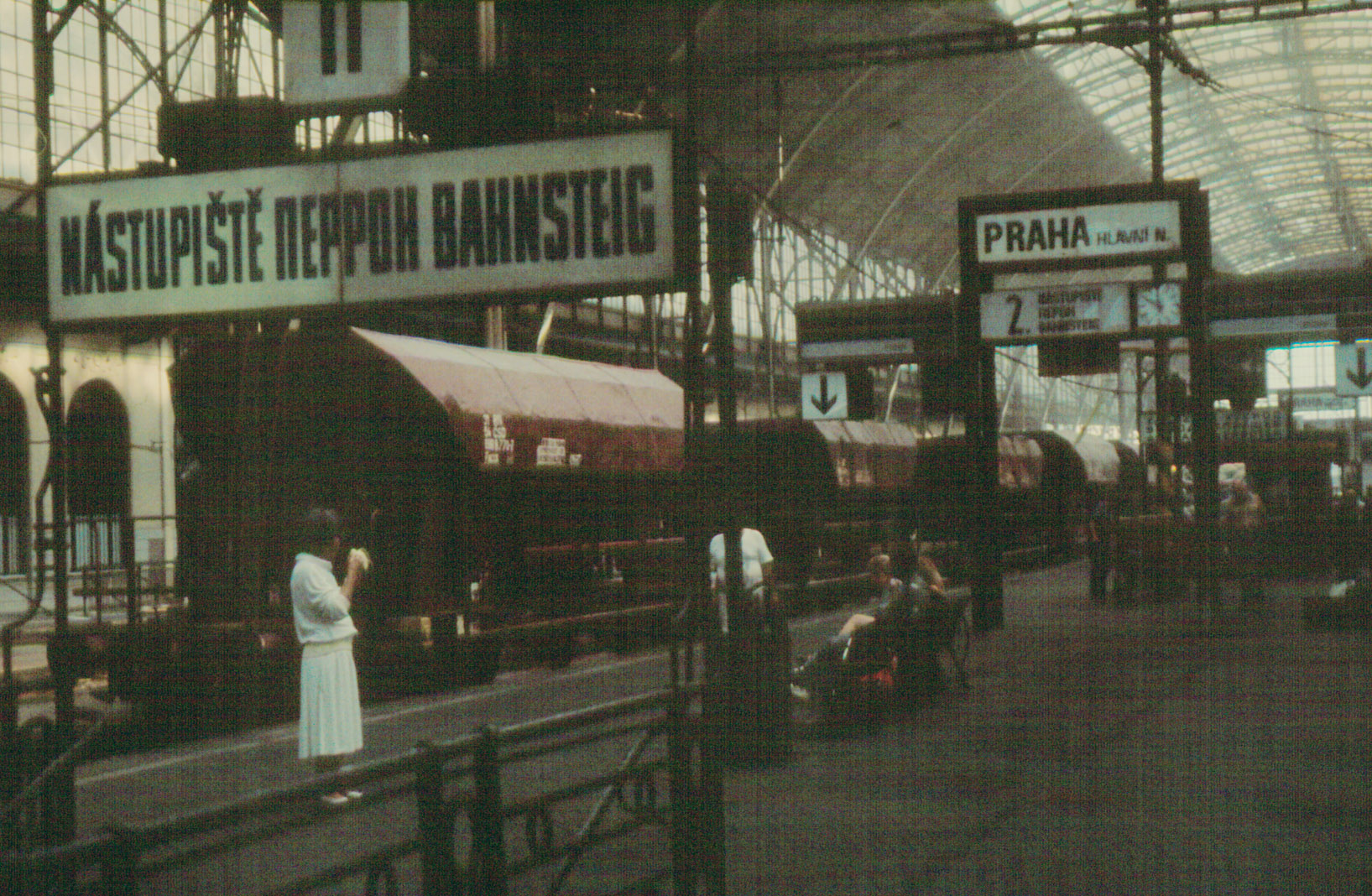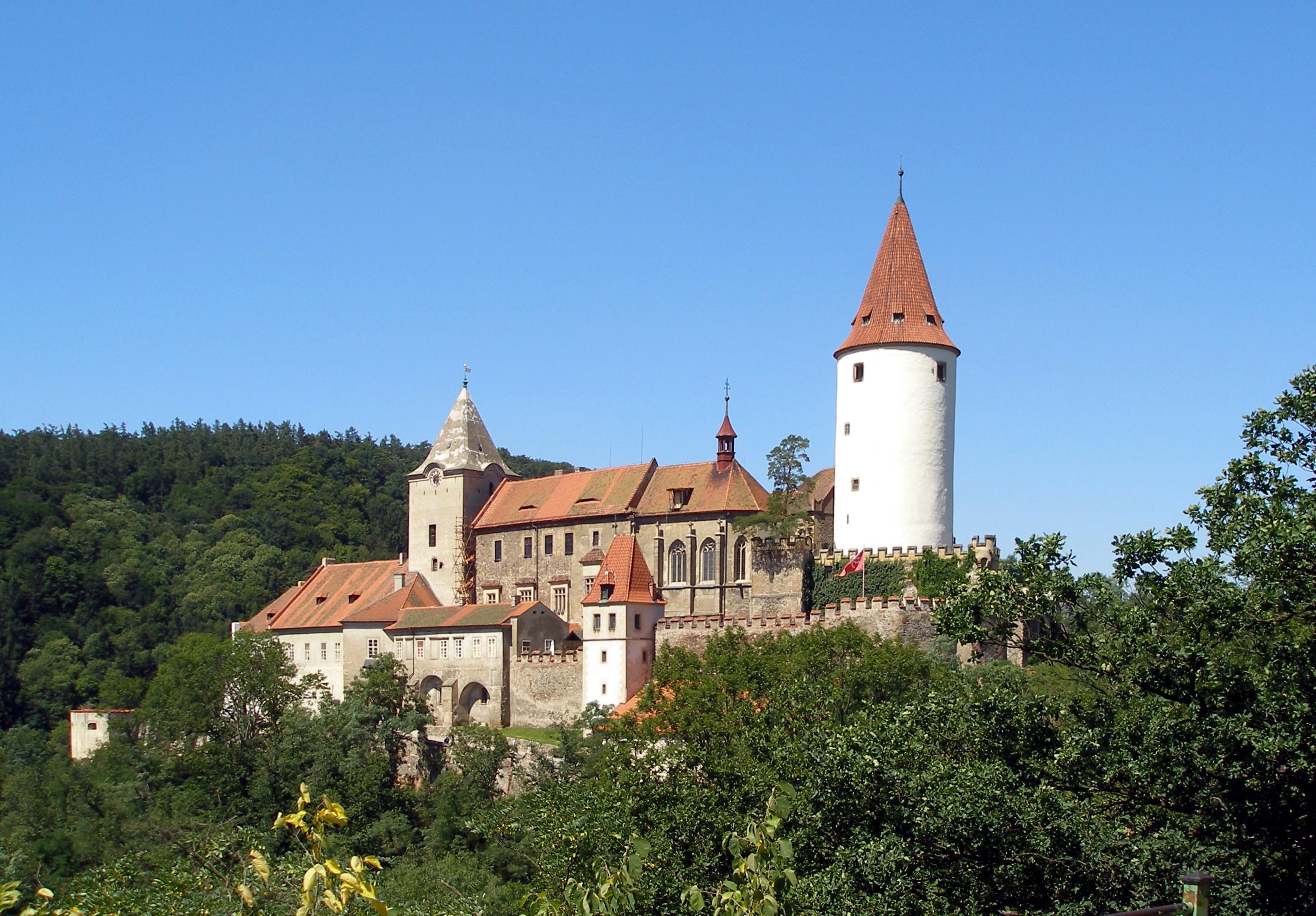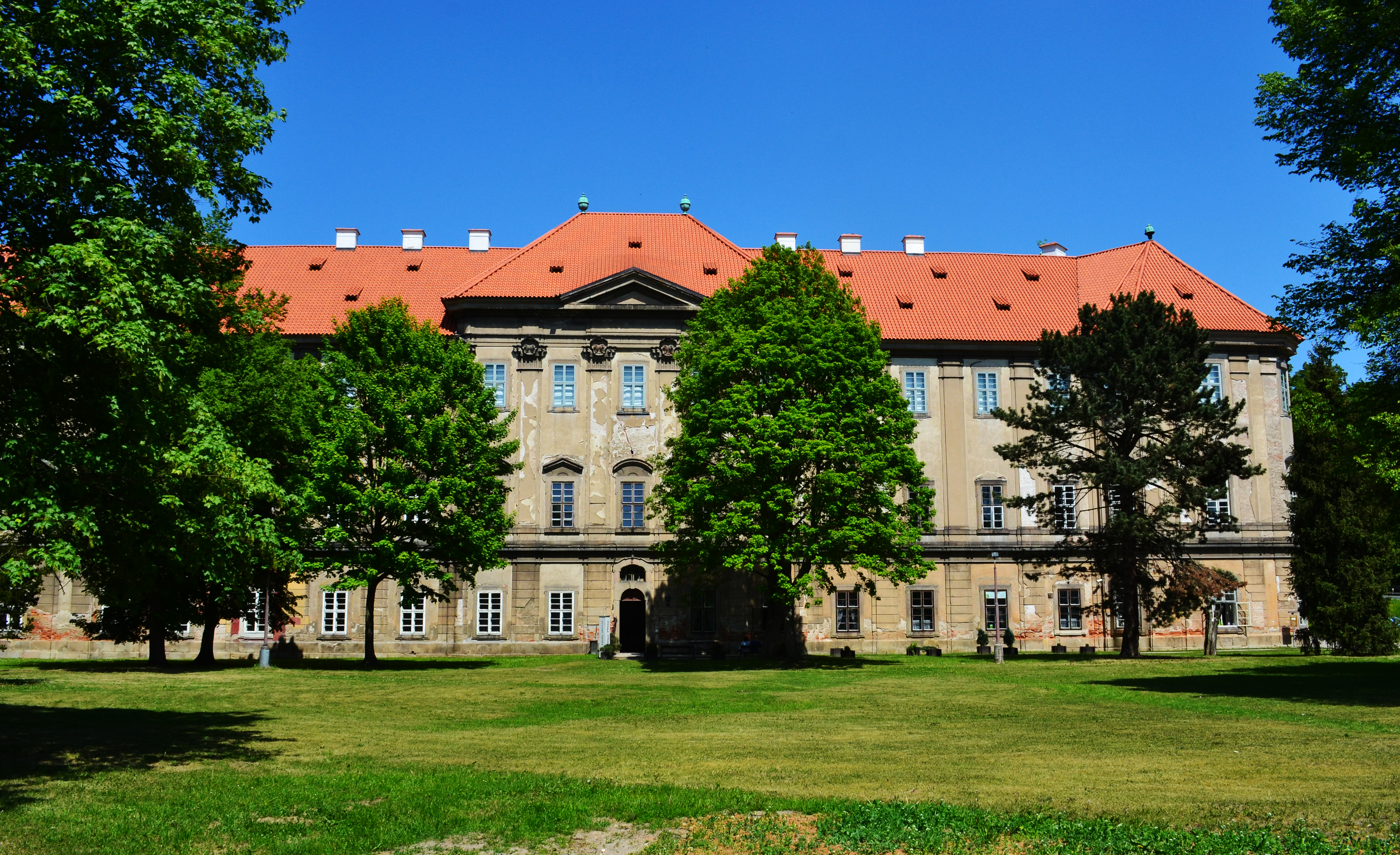|
Lubná (Rakovník District)
Lubná is a municipality and village in Rakovník District in the Central Bohemian Region of the Czech Republic. It has about 1,100 inhabitants. Etymology The name is derived from the old Czech word ''lub'', i.e. 'bark'. Lubná was either originally the name of a local brook into which the bark fell, or the name was derived from the houses in the village, covered with bark. Geography Lubná is located about southwest of Rakovník and west of Prague. It lies mostly in the Rakovník Uplands, only the southern part of the municipal territory extends into the Plasy Uplands. The highest point is at above sea level. History The first written mention of Lubná is from 1057. The next mention is from 1315, when the village was part of the Křivoklát estate. During the Thirty Years' War, the village lost all its inhabitants and was only slowly repopulated. In 1821, hard coal mining began in Lubná, which led to the development of the village. Later, shale was also mined. Demographics ... [...More Info...] [...Related Items...] OR: [Wikipedia] [Google] [Baidu] |
Obec
(, ; plural ) is the Czech and Slovak word for a municipality (in the Czech Republic, in Slovakia and abroad). The literal meaning of the word is " commune" or " community". It is the smallest administrative unit that is governed by elected representatives. Cities and towns are also municipalities. Definition The legal definition (according to the Czech code of law with similar definition in the Slovak code of law) is: ''"The municipality is a basic territorial self-governing community of citizens; it forms a territorial unit, which is defined by the boundary of the municipality."'' Every municipality is composed of one or more cadastral areas. Every municipality is also composed of one or more municipal parts (), which are usually town quarters or villages. A municipality can have its own flag and coat of arms. Czech Republic Almost the entire area of the Czech Republic is divided into municipalities, with the only exception being military training areas. The smaller mu ... [...More Info...] [...Related Items...] OR: [Wikipedia] [Google] [Baidu] |
Prague
Prague ( ; ) is the capital and List of cities and towns in the Czech Republic, largest city of the Czech Republic and the historical capital of Bohemia. Prague, located on the Vltava River, has a population of about 1.4 million, while its Prague metropolitan area, metropolitan area is home to approximately 2.3 million people. Prague is a historical city with Romanesque architecture, Romanesque, Czech Gothic architecture, Gothic, Czech Renaissance architecture, Renaissance and Czech Baroque architecture, Baroque architecture. It was the capital of the Kingdom of Bohemia and residence of several Holy Roman Emperors, most notably Charles IV, Holy Roman Emperor, Charles IV (r. 1346–1378) and Rudolf II, Holy Roman Emperor, Rudolf II (r. 1575–1611). It was an important city to the Habsburg monarchy and Austria-Hungary. The city played major roles in the Bohemian Reformation, Bohemian and the Protestant Reformations, the Thirty Years' War and in 20th-century history a ... [...More Info...] [...Related Items...] OR: [Wikipedia] [Google] [Baidu] |
Kralovice
Kralovice (; ) is a town in Plzeň-North District in the Plzeň Region of the Czech Republic. It has about 3,500 inhabitants. It is known for the former pilgrimage site of Mariánská Týnice. Administrative division Kralovice consists of six municipal parts (in brackets population according to the 2021 census): *Kralovice (3,080) *Bukovina (65) *Hradecko (137) *Mariánský Týnec (31) *Řemešín (22) *Trojany (45) Geography Kralovice is located about west of Plzeň. The southern part of the municipal territory with the town proper lies in the Plasy Uplands. The northern part lies in the Rakovník Uplands. The highest point is a hill at above sea level. The Kralovický Stream flows through the town. There are several small ponds around the town. History The first written mention of Kralovice is from 1183, when Duke Frederick, Duke of Bohemia, Frederick donated it to the Plasy Monastery. In 1547, Kralovice gained coat of arms and became a town. Until 1918, the town was part ... [...More Info...] [...Related Items...] OR: [Wikipedia] [Google] [Baidu] |
Praha Hlavní Nádraží
Praha hlavní nádraží is the largest railway station in Prague, Czech Republic. It opened in 1871 as Franz Josef Station, after Franz Joseph I of Austria. During the First Republic and from 1945 to 1948 the station was called Wilson Station (), after the former President of the United States Woodrow Wilson. The station is the largest Art Nouveau monument in the Czech Republic. Since 31 December 1976, it has been a cultural monument of the Czech Republic and since 1993 it has been part of the urban monument zone of Vinohrady, Žižkov and Vršovice. In 2014, the station served 224,505 trains (610 daily) and more than 53,000,000 passengers (71,000 daily) and a number of regional, national and international trains, for which it is often the starting or final station. The station is connected to Prague Metro Line C and the Hlavní nádraží railway station. Overview Initial construction The imperial decision of October 1866 to demolish the walls contributed to the cons ... [...More Info...] [...Related Items...] OR: [Wikipedia] [Google] [Baidu] |
Shale
Shale is a fine-grained, clastic sedimentary rock formed from mud that is a mix of flakes of Clay mineral, clay minerals (hydrous aluminium phyllosilicates, e.g., Kaolinite, kaolin, aluminium, Al2Silicon, Si2Oxygen, O5(hydroxide, OH)4) and tiny fragments (silt-sized particles) of other minerals, especially quartz and calcite.Blatt, Harvey and Robert J. Tracy (1996) ''Petrology: Igneous, Sedimentary and Metamorphic'', 2nd ed., Freeman, pp. 281–292 Shale is characterized by its tendency to split into thin layers (Lamination (geology), laminae) less than one centimeter in thickness. This property is called ''Fissility (geology), fissility''. Shale is the most common sedimentary rock. The term ''shale'' is sometimes applied more broadly, as essentially a synonym for mudrock, rather than in the narrower sense of clay-rich fissile mudrock. Texture Shale typically exhibits varying degrees of fissility. Because of the parallel orientation of clay mineral flakes in shale, it breaks in ... [...More Info...] [...Related Items...] OR: [Wikipedia] [Google] [Baidu] |
Thirty Years' War
The Thirty Years' War, fought primarily in Central Europe between 1618 and 1648, was one of the most destructive conflicts in History of Europe, European history. An estimated 4.5 to 8 million soldiers and civilians died from battle, famine, or disease, while parts of Germany reported population declines of over 50%. Related conflicts include the Eighty Years' War, the War of the Mantuan Succession, the Franco-Spanish War (1635–1659), Franco-Spanish War, the Torstenson War, the Dutch-Portuguese War, and the Portuguese Restoration War. The war had its origins in the 16th-century Reformation, which led to religious conflict within the Holy Roman Empire. The 1555 Peace of Augsburg attempted to resolve this by dividing the Empire into Catholic and Lutheran states, but the settlement was destabilised by the subsequent expansion of Protestantism beyond these boundaries. Combined with differences over the limits of imperial authority, religion was thus an important factor in star ... [...More Info...] [...Related Items...] OR: [Wikipedia] [Google] [Baidu] |
Křivoklát Castle
Křivoklát Castle () is a castle in Křivoklát in the Central Bohemian Region of the Czech Republic. It is protected as a national cultural monument. History Křivoklát was founded in the 12th century, belonging to the kings of Bohemia. During the reign of Otakar II of Bohemia a large, monumental royal castle was built, later rebuilt by King Wenceslaus IV and later enlarged by King Vladislaus II. The castle was damaged by fire several times. It was turned into a harsh prison and the building slowly deteriorated. During the 19th century, the Fürstenberg family became the owners of the castle and had it reconstructed after a fire in 1826. The Fürstenberg family owned the castle until 1929. Today the castle serves as a museum, tourist destination and place for theatrical exhibitions. Collections of hunting weapons, Gothic paintings and books are stored there. Gallery Wenceslas Hollar - Bohemian views 11 (cropped).jpg, Křivoklát on an engraving by Wenceslaus Hollar ... [...More Info...] [...Related Items...] OR: [Wikipedia] [Google] [Baidu] |
Plasy Uplands
Plasy (; ) is a town in Plzeň-North District in the Plzeň Region of the Czech Republic. It has about 2,900 inhabitants. It is known for its former monastery of the same name, which is protected as a national cultural monument. Administrative division Plasy consists of six municipal parts (in brackets population according to the 2021 census): *Plasy (1,891) *Babina (214) *Horní Hradiště (168) *Lomnička (80) *Nebřeziny (179) *Žebnice (158) Geography Plasy is located about north of Plzeň. It lies in the Plasy Uplands. The highest point is the hill Spálená hora at above sea level. The Střela River flows through the town. History The foundation of the town is connected with the foundation of the Cistercian monastery. The Plasy Monastery was founded in 1144 by then Prince Vladislaus II. The monastery experienced the greatest development during the reign of King Wenceslaus I, and its property gradually grew to cover 50 surrounding villages. The development of the mon ... [...More Info...] [...Related Items...] OR: [Wikipedia] [Google] [Baidu] |
Rakovník Uplands
Rakovník (, ) is a town in the Central Bohemian Region of the Czech Republic. It has about 16,000 inhabitants. The historic town centre is well preserved and is protected as an urban monument zone. Administrative division Rakovník consists of two municipal parts (in brackets population according to the 2021 census): *Rakovník I (871) *Rakovník II (14,502) Etymology According to legend, the name was derived from ''rak'' (meaning 'crayfish'), which was eaten here during a famine. Therefore this animal was adopted on the town's coat of arms and flag. However, the name was more likely derived from type of vegetation in wetlands by a stream, which gave the name to the stream and later to the town. Geography Rakovník is located about west of Prague and northeast of Plzeň. It lies in the Rakovník Uplands, on the border of the Křivoklátsko Protected Landscape Area. The highest point is at above sea level. The stream Rakovnický potok flows through the town. History The f ... [...More Info...] [...Related Items...] OR: [Wikipedia] [Google] [Baidu] |
Regions Of The Czech Republic
Regions of the Czech Republic ( ; singular ) are higher-level territorial self-governing units of the Czech Republic. History The first regions (''kraje'') were created in the Kingdom of Bohemia in the 14th century. At the beginning of the 15th century, Bohemia was already divided into 12 regions, but their borders were not fixed due to the frequent changes in the borders of the estates. During the reign of George of Poděbrady (1458–1471), Bohemia was divided into 14 regions, which remained so until 1714, when their number was reduced to 12 again. From 1751 to 1850, after the four largest regions were divided, the kingdom consisted of 16 regions. Between 1850 and 1862, there were several reforms and the number of regions fluctuated between 7 and 13. Due to the parallel establishment of political districts in 1848, however, their importance declined. In 1862, the regions were abolished, although the regional authorities had some powers until 1868. Moravia was divided into ... [...More Info...] [...Related Items...] OR: [Wikipedia] [Google] [Baidu] |



